
May Brookies and Early Bright Salmon
I spent the week of May 12th fishing for brookies at the Mahoney Brook camp, 22 miles up the Cains River. This blog has a report on that trip and a few thoughts on the start of the bright salmon season. There are a number of things going on in salmon conservation, too, but we’ll wait a few days for some expected additional news to write that blog. Among other things, though, we have new politicians in charge at DFO and in key offices. We are going to do a little letter writing campaign to try and bring them up to speed with the disaster that DFO’s folly has created on Canada’s greatest salmon river.
The guides tell me that while fishing for salmon kelts in the Quarryville area of the SW Miramichi, that they have landed an unusual number of large 16 to 20-inch sea run brookies. Country Haven Outfitters has been posting these pictures almost daily. Jim MacDonald who guides at my camp has also been guiding down in the Rapids, and he confirmed the decent numbers of large, brookies. These fish are sea runs that have spent the winter feeding in the Miramichi estuary and will now work back up into the headwaters of the branches and tributaries to find a cool water source to weather the summer. After spawning in October, they again return to the estuary for the winter. Historically a few of these fish grew to better than 24-inches in length and 7 pounds in weight, but examples like this are exceedingly rare given the abundance of striped bass eating the smaller trout and destroying the smelt resource that had nurtured not only the sea runs but also played a key part in rebuilding salmon kelts.
Speaking of kelts, the last of those salmon are either back in the ocean or will be very soon.
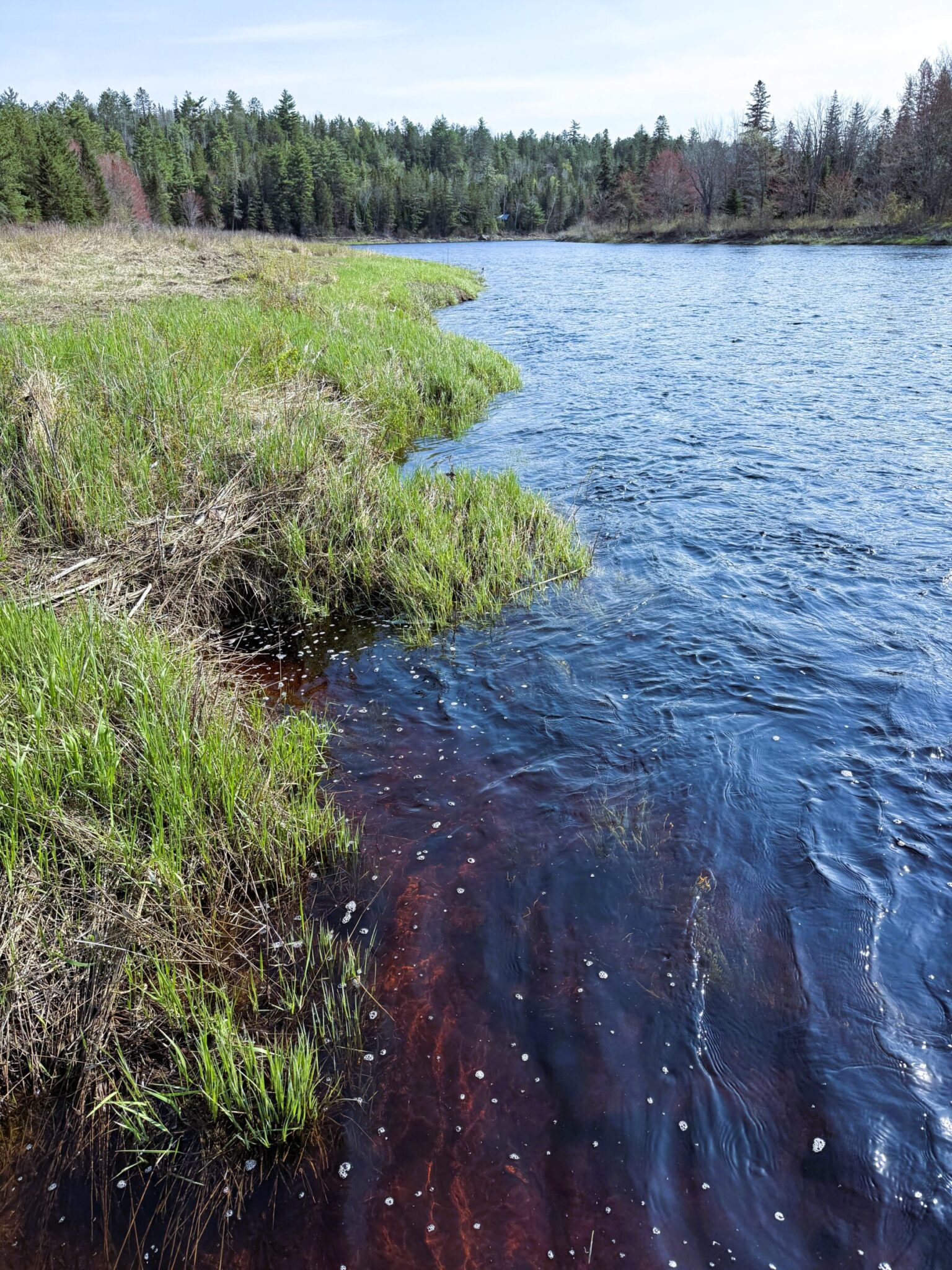
On our first day the water was high and strong, and the fish were tucked in along the shorelines out of the flow. There were few green leaves and most of the island was still covered in brown grass.
The fishery was again much better this year than some anticipated based on last summer’s low bright salmon returns. That’s great news for the river’s outfitters who have long depended on this sport for early season business. My guide, the late Willy Bacso, did some bookkeeping work at the old Wade’s Lodge, and he told me that about 30% of the entire season’s revenues came from the very popular spring salmon fishery. I always make it up to my camp in Blackville for the April 15th opening of spring salmon season. If you scroll back to the previous blog, you will see a full report and photos on that trip from 2025.
For many years I fished the worm hatch for striped bass in Falmouth, Massachusetts on Cape Cod around the 8th of May. I’d come home to Maine after a week, and Falmouth, Maine felt like I was returning to winter. Towards the end of May I’d go up to a camp that my old friend George Watson and I had at Souderhunk Lake inside Baxter Park in Northern Maine. The temperatures were very much still wintery there then, and the tree foliage would be less developed than it had been on Cape Cod three weeks earlier. Actually, I really enjoyed those transitions. I felt like I got to experience a whole extra month of spring, one of my very favorite times of the year. Going to the Cains in mid-May provides some of that same sensation.
When we started fishing last Wednesday the river was still quite high from the rain the previous weekend. The river in front of the camp runs quite fast for the Cains, and the flow proved a bit too heavy to provide good fishing for that day and Thursday. We didn’t have to go too far to find a few trout and salmon smolts though. A couple hundred feet downstream the river slowed down and I found that a large streamer fly fished on a sink tip line was well received by some decent brookies. We also fished the next two pools down river and while it was no bonanza we had reasonably consistent action. Andy Dumaine was fishing with me, and he fished a sink tip with a good-sized muddler along with a smaller wet fly dropper and did very well with that setup too.
I had bought myself a Christmas present last winter of a Reddington Field Kit Trout Spey 11’3” 4-weight. I gave it a good workout and really enjoyed it. The kit came ready to fish with a nice little, large-arbor reel with a good drag, backing, running line and a miniature Skagit head. Everything was sized to add a MOW tip light and then a short, mono leader. For those not familiar, MOW stands for the initials of three well-known, West Coast steelhead gurus. The MOW tips are 10’ long, come with a loop to attach to the end of a Skagit or Scandi Spey casting head, and are made to include an amount of floating line and an amount of T8 or T11 sinking line – all seamlessly made by Rio. Rio, like Reddington and Sage is also owned by Far Bank. I could cast this Spey style or overhead if I wished. Long casts by trout standards – 60 feet or so – were effortless.
The first couple of days were very warm and windy, but the nights cooled off dramatically to the high 30sF. We needed a fire in the woodstove in camp each morning. The water dropped very perceptibly each day. On day two Jim MacDonald guided Andy and I on a miniature “sail down the Cains.” We took
our Old Town Tripper XL – incomprehensibly it is now discontinued – and worked slowly along, getting out to fish various pools between Mahoney Brook and the old Shinnickburn village where we finally took out the canoe. Darrell Warren met us with a canoe trailer and drove the 4 road miles back to camp. The short of it is that we found some amount of brookies and the occasional salmon smolt at this pool and that, and more importantly we had a great time. The Cains is still almost totally undeveloped. We never saw another soul anywhere along the way and found a couple of places that will make this trip worth doing again in the fall for salmon. On the last day of fishing, we were
back at camp and the water had dropped a lot. We found a few brookies here and there in the fast water, and in the afternoon, we had some decent dry fly action as a large hatch of caddis with some mayflies thrown in was coming off into the evening. After fishing we watched a black bear feeding just a couple of hundred feet away in the new grass across the river. It was a good dose of the Cains River wilderness that was a good for the soul.
I’ve noted over the years that the first bright salmon I see caught each May are often by the same few anglers. Naturally, these are good fishermen. I know some of them, though, and what they mostly do that is exceptional is to simply go fishing! One of my fishing friends likes to say that the only time that you have no chance to catch a salmon is when you do not have a fly in the water. Trite but true! For several years when he was guiding at Campbell’s Jason Curtis had one of if not the first bright salmon on the river. He caught several of these fish at Campbell’s in the same lies that we fished hard come the middle of June. Jason was always busy, and he didn’t spend countless hours out there flogging empty water. What he did do was to take a little prime time mornings and afternoons, anchored his Sharpe canoe over some well-known lies for the height of water that he was fishing, put on a big fly that he had confidence in – usually one of Ashley Hallihan’s, slim-bodied, green machines – and make an hour or two of good presentations. May fishing for Miramichi brights is never a high percentage game, but it isn’t on the Restigouche either. If one puts in the time doing things right, though, the chances are there.
In order to encourage early season fishing, and to reward those who persevere, the MSA is holding out a stick in the form a lovely certificate with artwork by Luther Hall for the season’s first bright salmon, and the same for the last salmon of the fall but with artwork from John Rice. Yes, the certificates are lovely, but the big reward is the recognition and personal satisfaction. All you have to do is to take a picture or have your buddy take a picture of you with your catch and submit it to the MSA at admin@miramichisalmon.ca. You must include your name, town and branch of the river where the catch was made. We don’t want to know what pool it came from. An estimate of the length of the fish would be nice but is not necessary. Please send a copy to me here at bigbass too so that I can put it in my blog.
Thanks for reading. Brad Burns


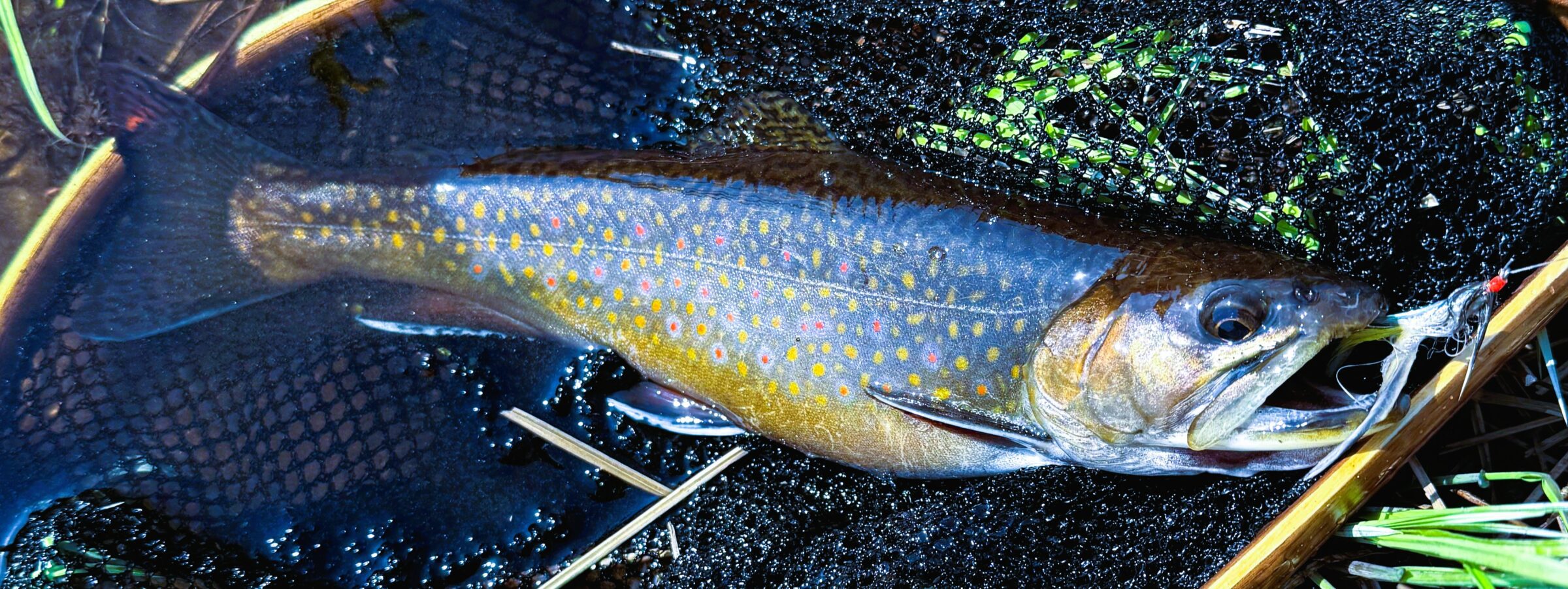
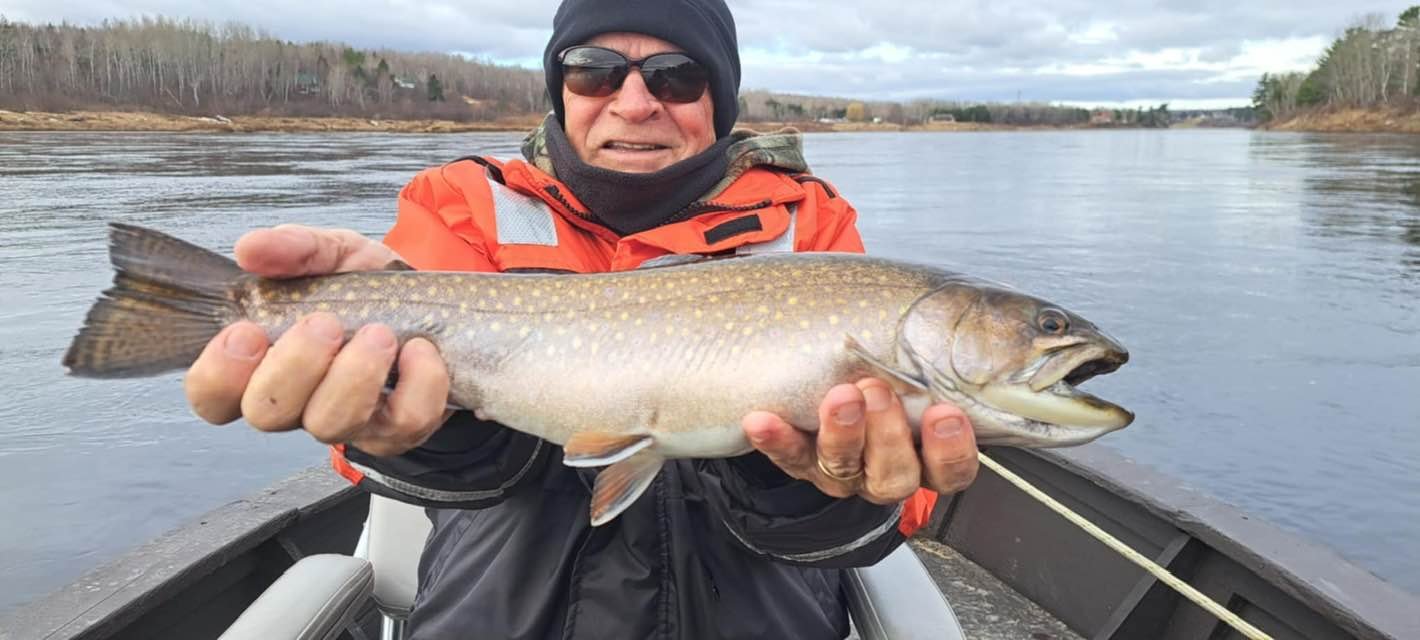
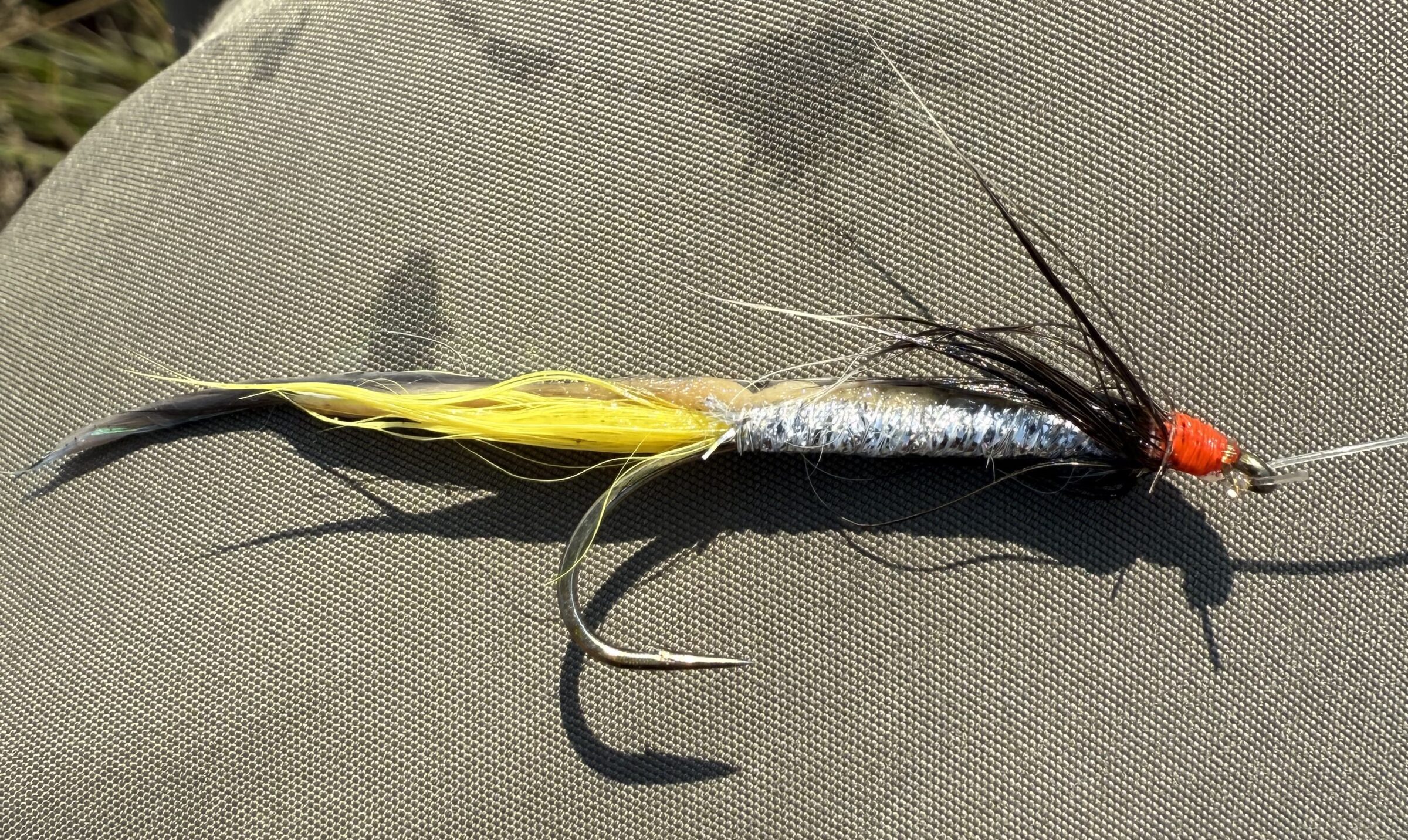
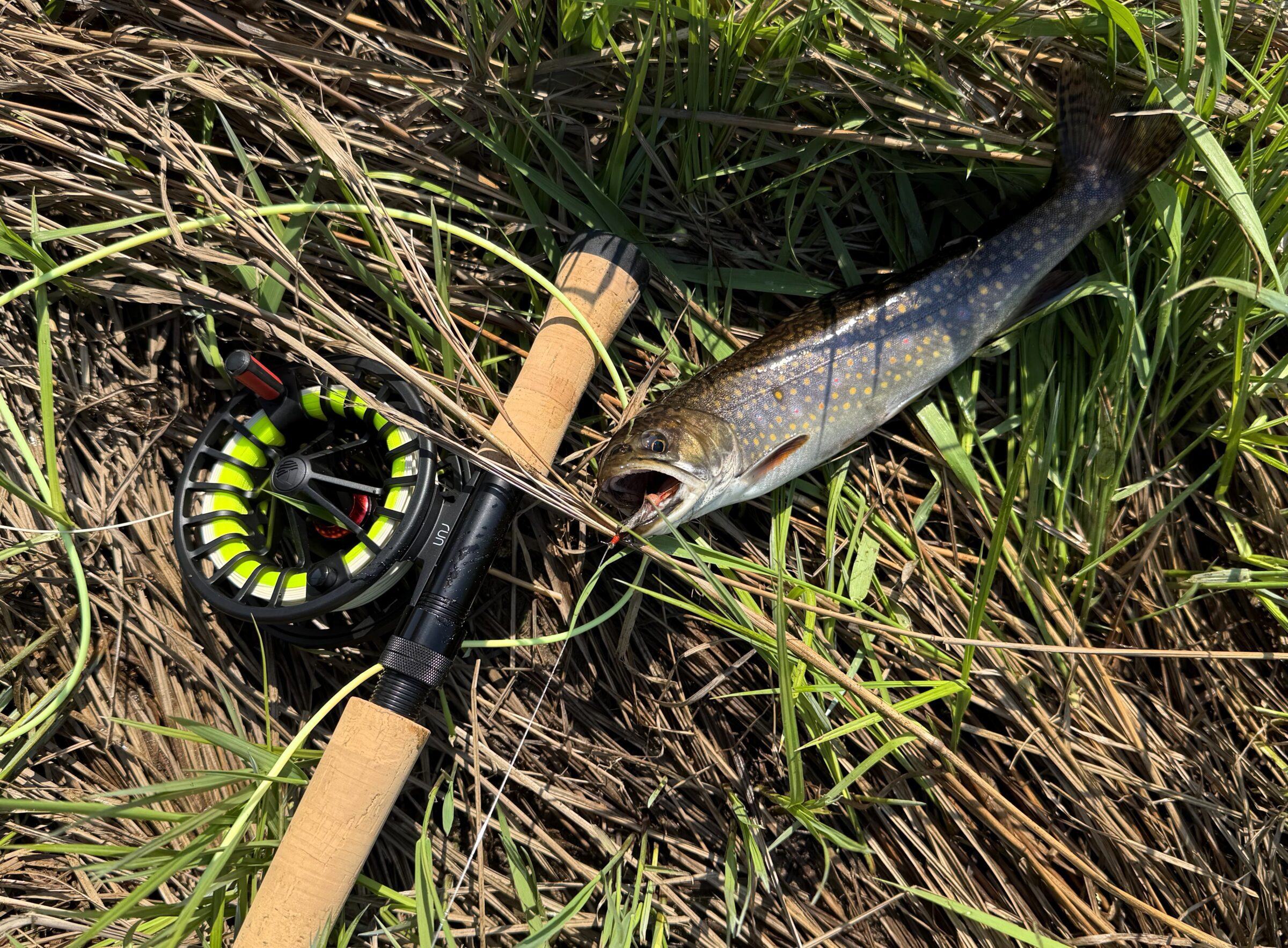
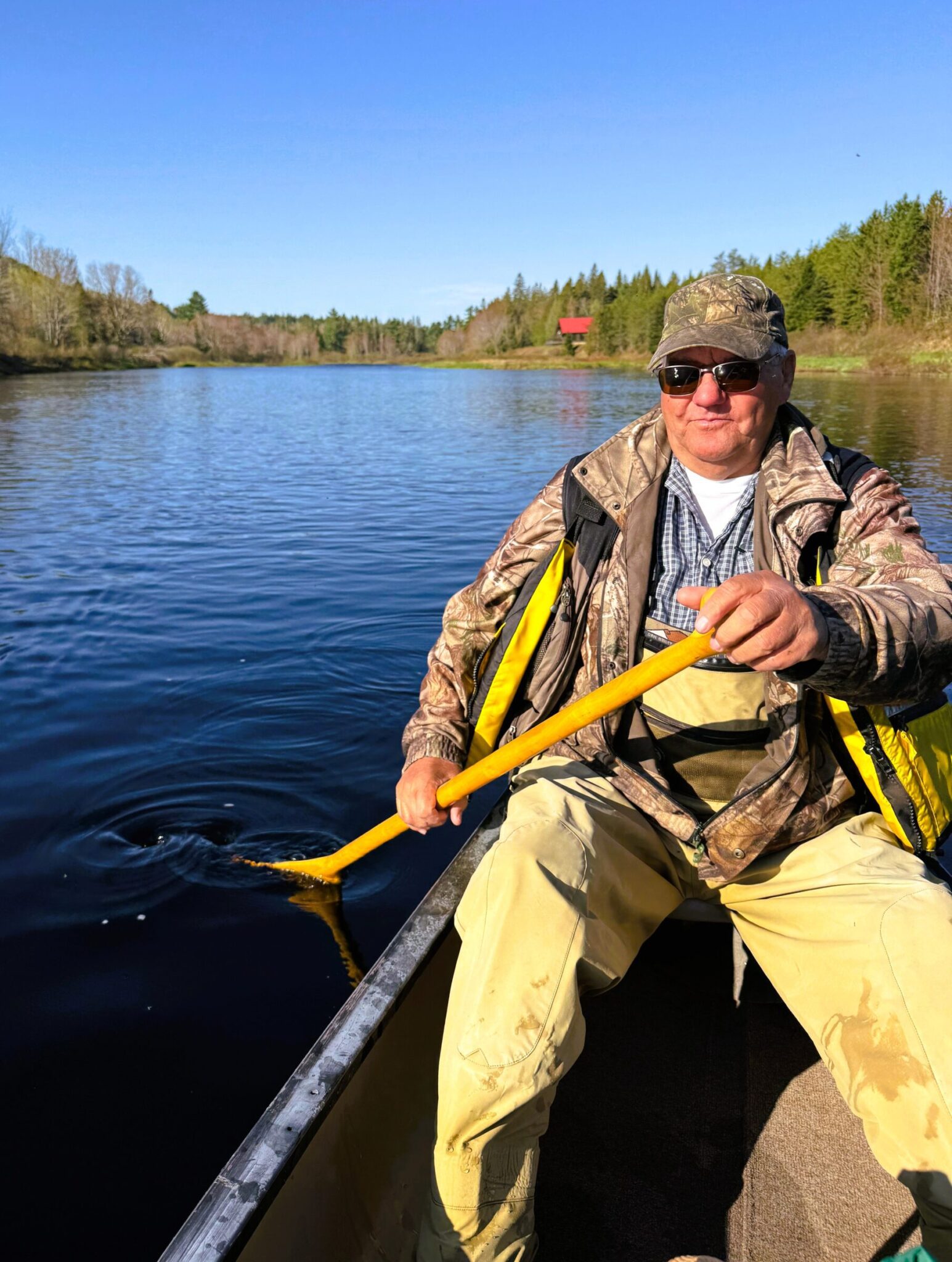
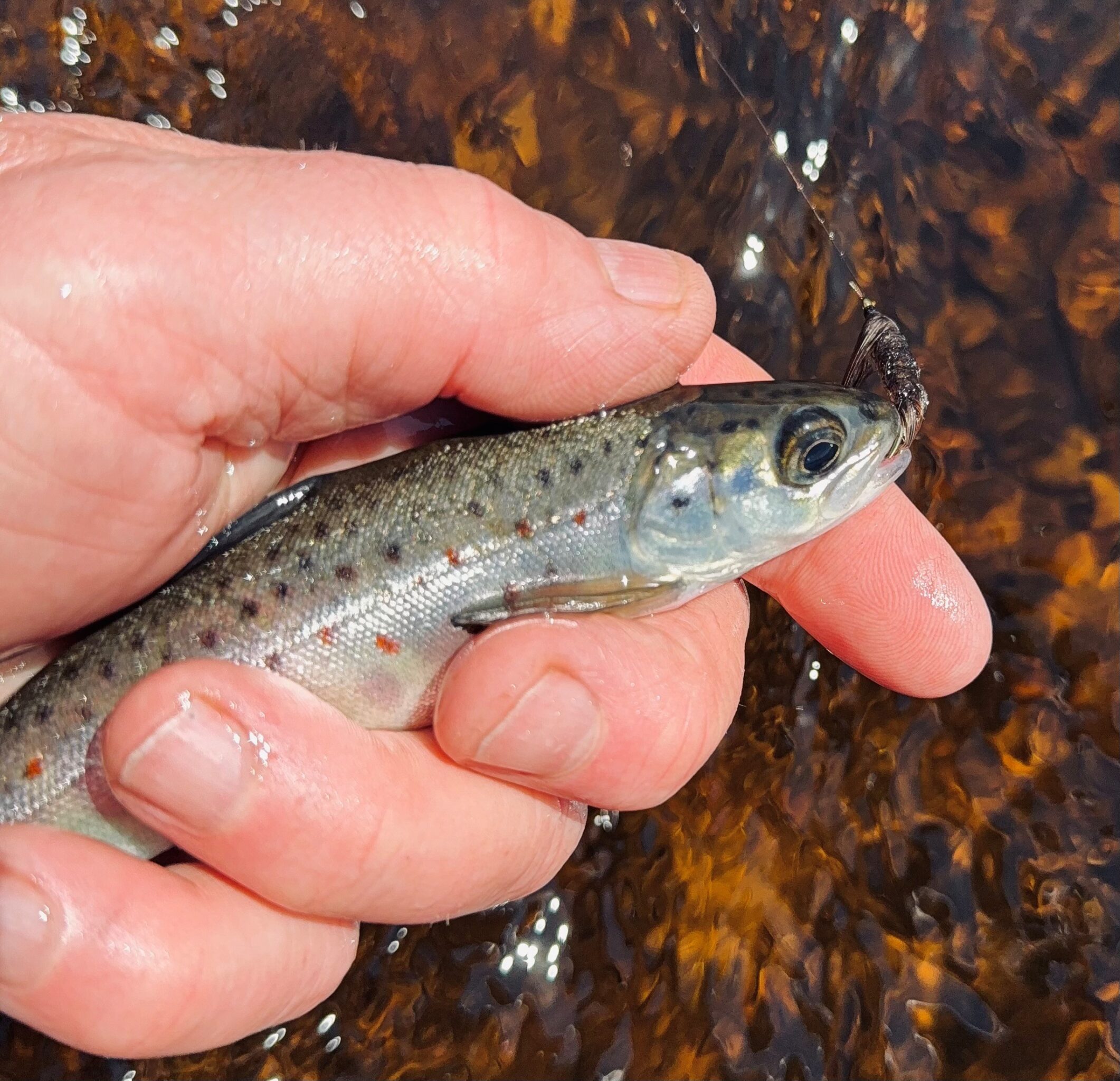
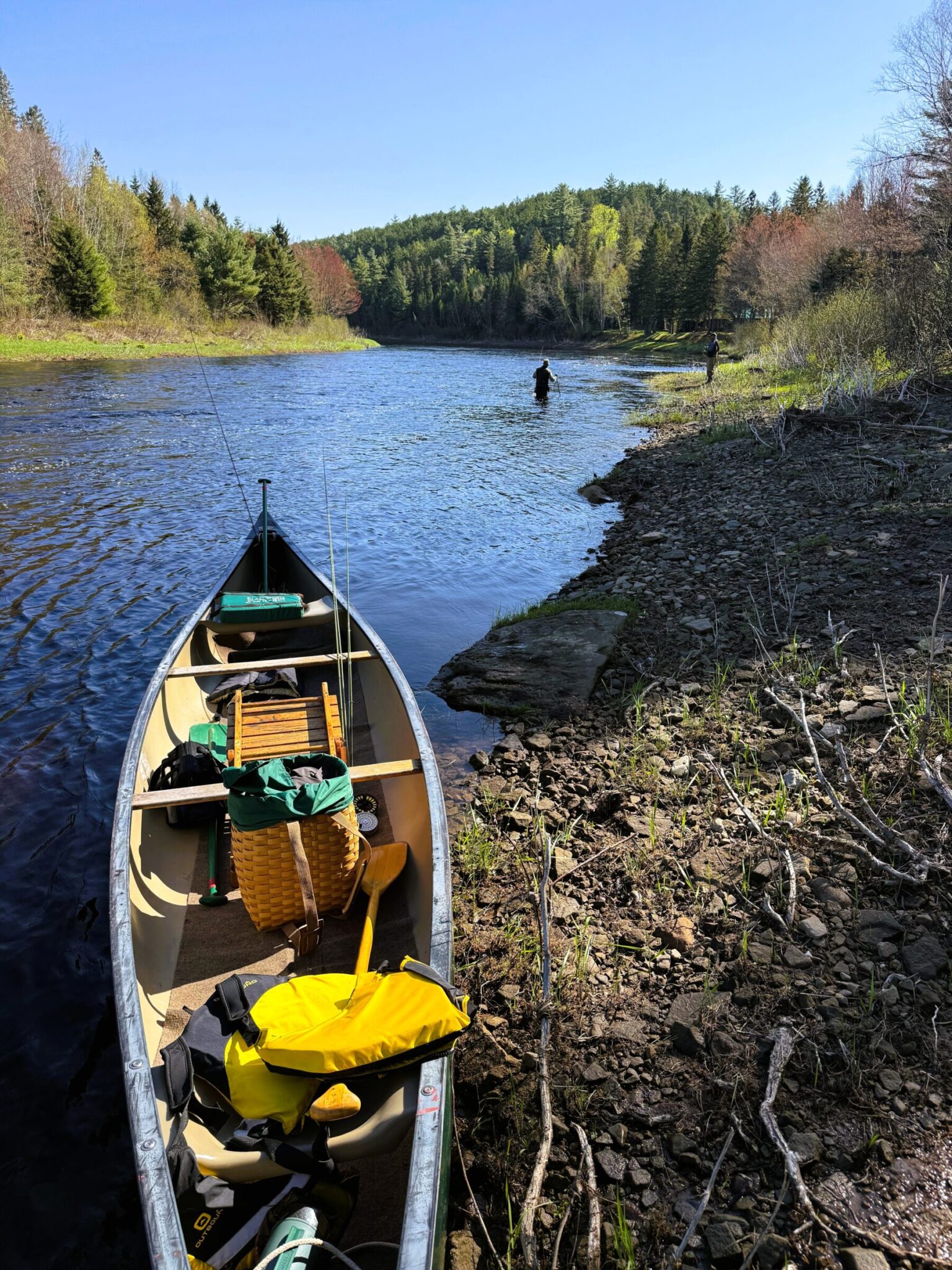
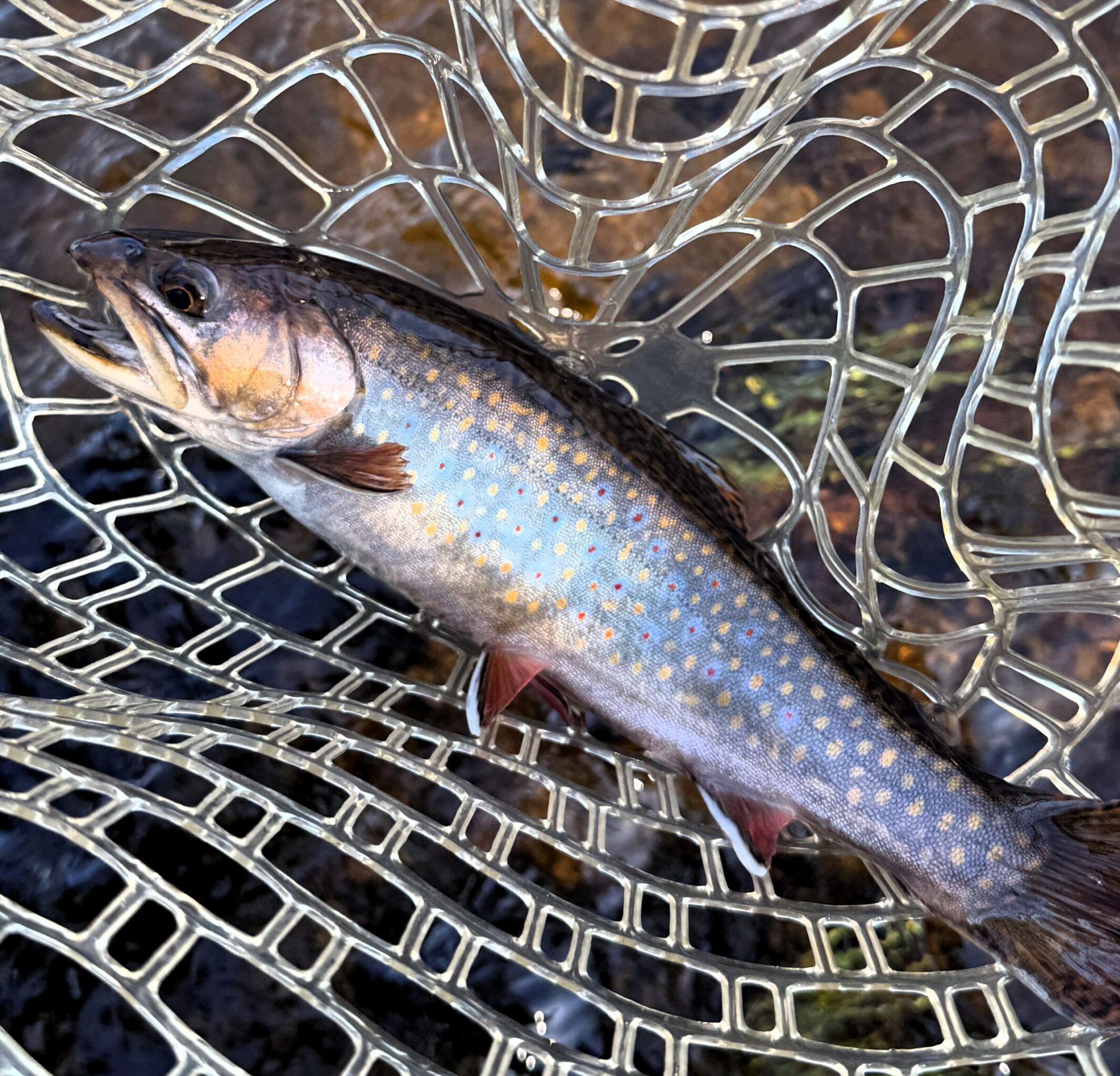
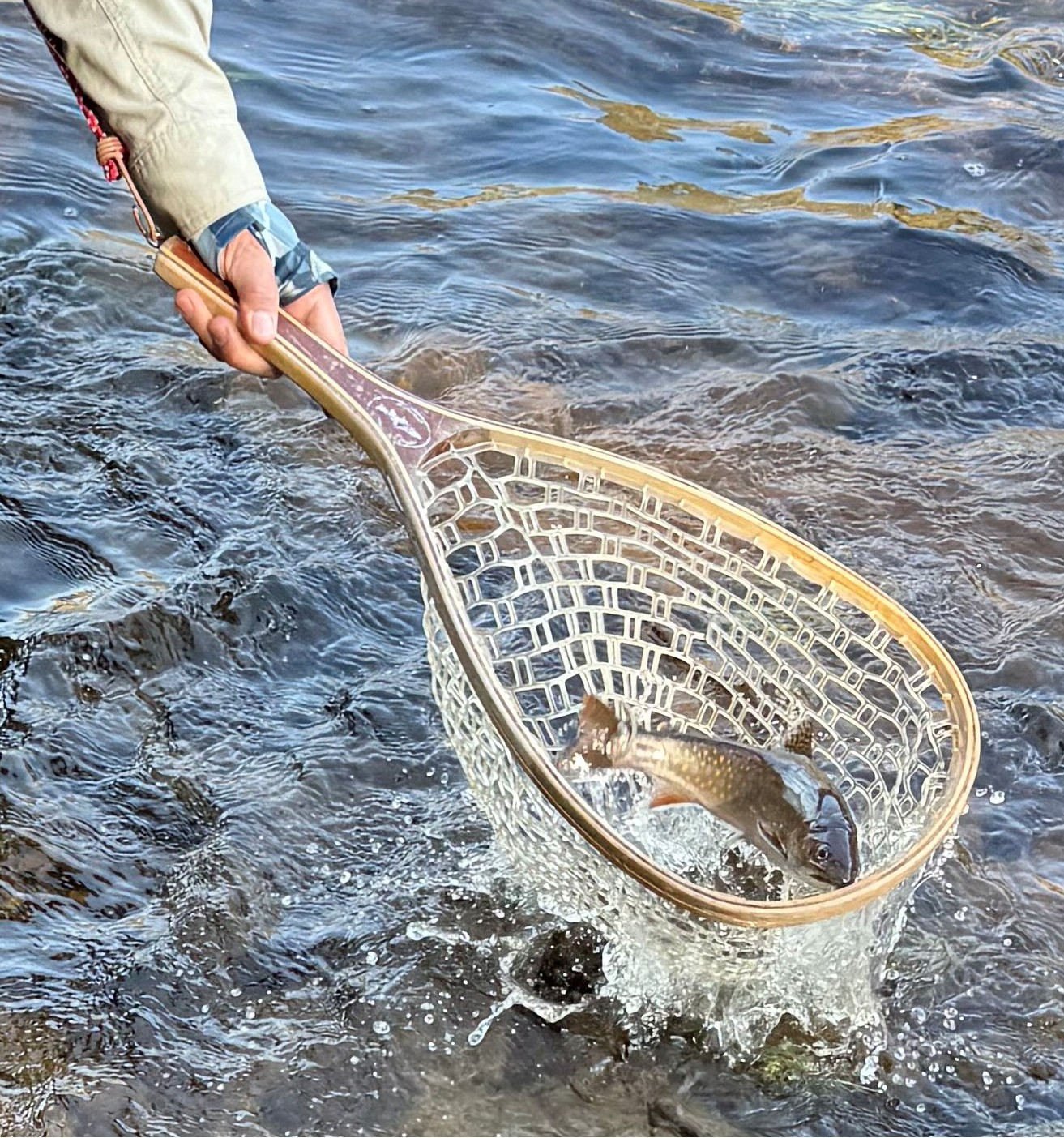
Brad, how do the brookies escape the perils of the striped bass? Coming to Black Brook 3X this summer with very low expectations for catching but coming with great friends and family so we will have a a blast regardless. Stop by if in the area.
Tom
Thanks Tom. Send me an e-mail when you are up and I’ll stop by if I am also in camp.
The brookies situation is very different than the salmon. The number of large sea run brook trout has decreased very markedly – this year anecdotally showing something of a bounce. there have been no studies, but it seems certain that a lot of the smaller trout that go down to the estuary are eaten by the bass. Unlike the salmon the decrease in large sea run trout means nothing to the breeding potential for brook trout in the system because 99% of the adults live up in the streams that feed the whole system. It is really only the ones that go down to the estuary to become sea runs that get eaten, and that is a tiny percentage of the population.
You can’t beat an XL Tripper! I cherish mine like no other. A damn fine vessel.
Thanks for the nice reading Brad. It was nice to hear that Jim MacDonald was still guiding. I met him at Little Forks a few years back. I was there on an invite with Jim Hughson. Young Jamie was there also. Great people. I agree about the increase in brook trout. Caught and released 4 nice ones last week at the Cashe Pool. They ranged from 9 to 13 inches. I’ll likely get over next week to look for some larger ones. Thanks again for the nice reading. Hope you have a great season on the river.
A partner in angling ,
Mark Cornford